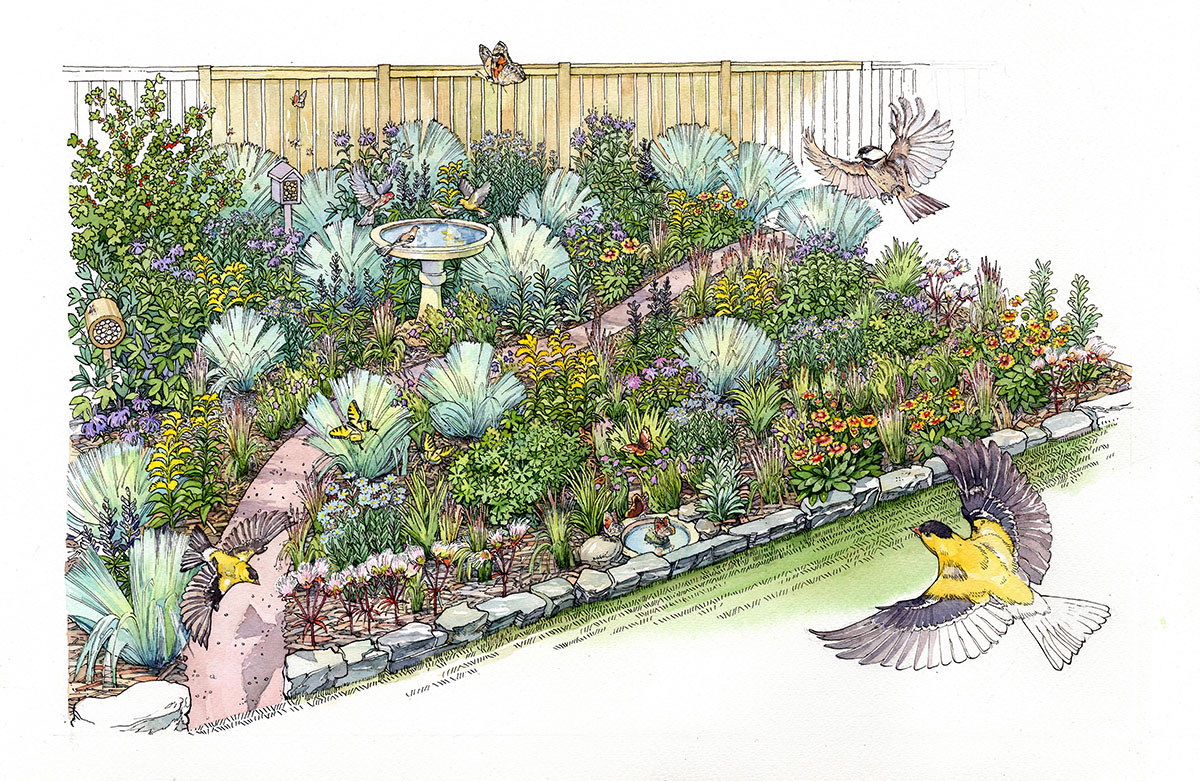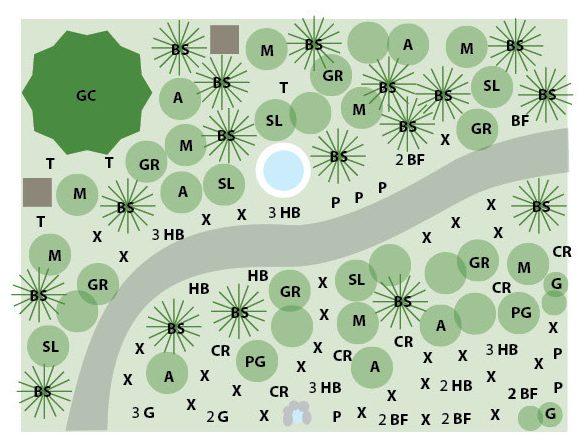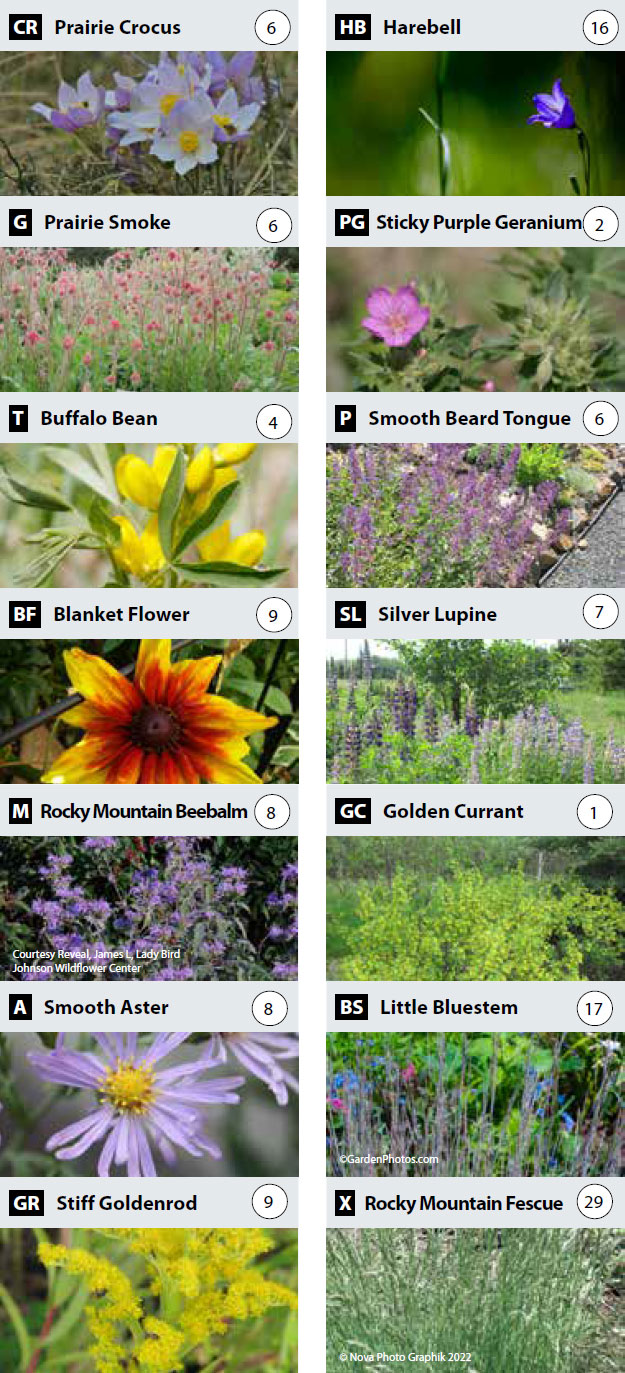YardSmart garden bed design for native wildflowers
Planting native wildflowers contributes to a healthy landscape and mitigates the impacts of climate change. Common native wildflowers can be found in garden centres and there are local native plant suppliers that specialize in these species. When planning your garden, call ahead of time to see what native plants are available. Consider including a bird bath, bee condo and insect water dish with rocks for landing pads.

This bed has been developed in partnership with The Calgary Horticultural Society using plants that thrive in Calgary. Once established, this garden bed will take little time, effort and water to maintain.
Need help designing your garden?
Use our step-by-step online guides on planting beautiful and low maintenance garden beds which work in all areas of your yard:
Tips for successful planting
Before you begin:
- Follow the YardSmart planning and design tips to ensure this design suits your yard conditions.
- Use a good depth of quality soil.
3 Ways to Remove Lawn
- In fall, smother the lawn by covering with several layers of damp newspaper, or cardboard. Top with compost or soil to keep wet. Plant in the springtime.
- Dig up the sod, flip it over so the grass is facing downwards, and cover with soil so no grass shows. Top with compost or new soil before planting.
- Put a 10 cm layer of compost and new soil on top of the grass to smother it. Ideally, wait a few weeks for grass to die, or plant right away ensuring there is no grass exposed after planting.
How to install a garden bed
- Ensure the plants and the area to be planted are watered well.
- Lay the plants out on the prepared bed following the planting map provided. Space them according to the tags’ description of plant width at maturity.
- Dig the holes approximately twice the width of the pot and the same depth.
- Remove the plant from its pot and carefully loosen and remove some of the soil so the roots can be spread outwards.
- Place plant in hole and fill with soil. Ensure the base of the plant stem is level with the ground. Water well.
- Add a layer of mulch, keeping it away from the stem of the plant.
Water requirements
- Keep perennials well-watered for the first year or two (approx. 2.5 cm water/week or until soil is moist to the base of the root system, 1-2 inches down).
- Shrubs need regular watering every week for the first 2-3 years. Use a drip hose spiraled around the root area. 15-20 minutes is sufficient.
- In following years, all plants will be drought tolerant and only need water after 2-3 weeks of hot dry weather with little to no rainfall.
Helpful reminders
- Keep soil covered with mulch and remove weeds.
- Fast growing plants usually require division every 3–5 years.
How to winterize:
- Leave perennial foliage until spring to catch snow and provide food and shelter for birds and beneficial insects.
- Fallen leaves make great mulch so can be left in garden beds.
- For shrubs, water well in the fall until the ground freezes.
Design for Native Wildflowers
Based on a garden 4 m (13’1”) by 3 m (9’10”)

Flower name (Quantity circled in white)


